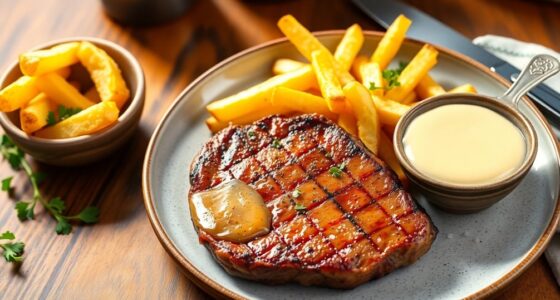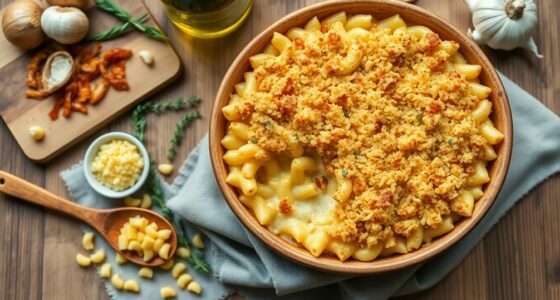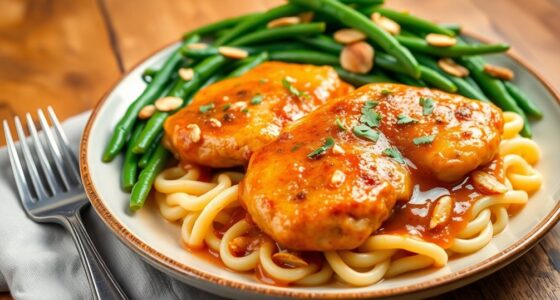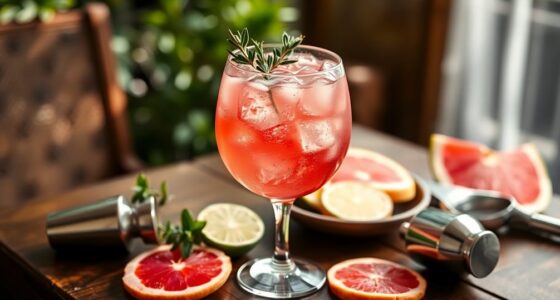The Hugo Spritz is a revitalizing Italian cocktail that perfectly combines floral elderflower liqueur with crisp prosecco and soda water. Created in 2005 by bartender Roland Gruber, it quickly gained popularity in Austria and Germany, becoming a summer staple. You'll love how the mint and lemon garnish elevate the drink's aroma and appearance. Plus, you can easily customize the flavors to suit your taste. Stick around, and you'll discover some handy tips to perfect your Hugo Spritz!
History
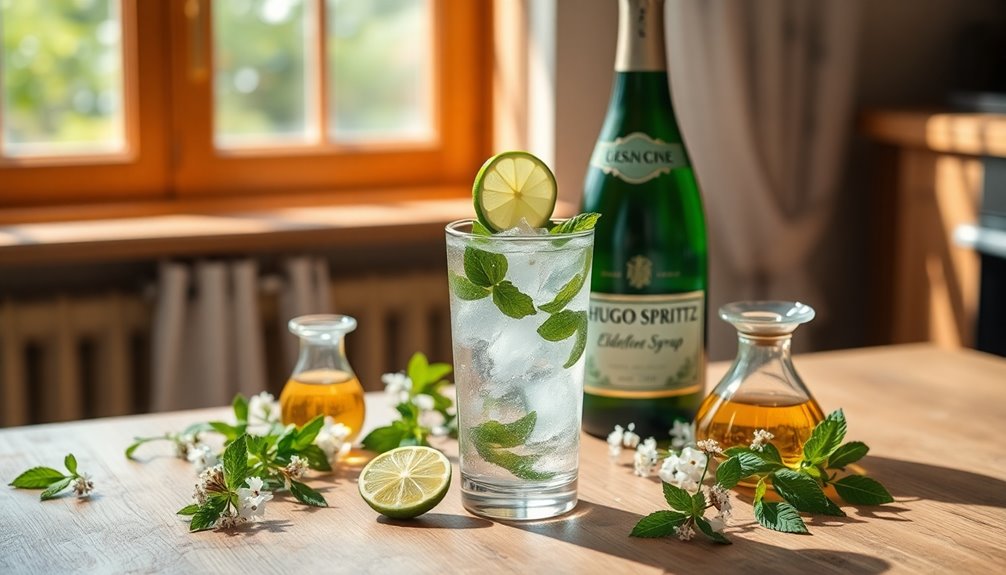
The history of the Hugo Spritz is an intriguing tale that begins in 2005, when bartender Roland Gruber crafted this invigorating cocktail in Naturno, a quaint village near the Italian-Austrian border.
Originally named "Otto," the drink featured lemon balm cordial until elderflower liqueur was introduced, leading to its renaming as "Hugo." The cocktail quickly gained popularity in Austria and Germany, becoming a staple in the aperitif culture of the region.
By the 2010s, the Hugo Spritz had spread throughout Europe and made its way to the United States, adding to the diverse spritz variations available.
This drink represents a modern twist on traditional Italian cocktails, emphasizing floral and aromatic qualities rather than the bitter notes common in other spritzes.
Recipe
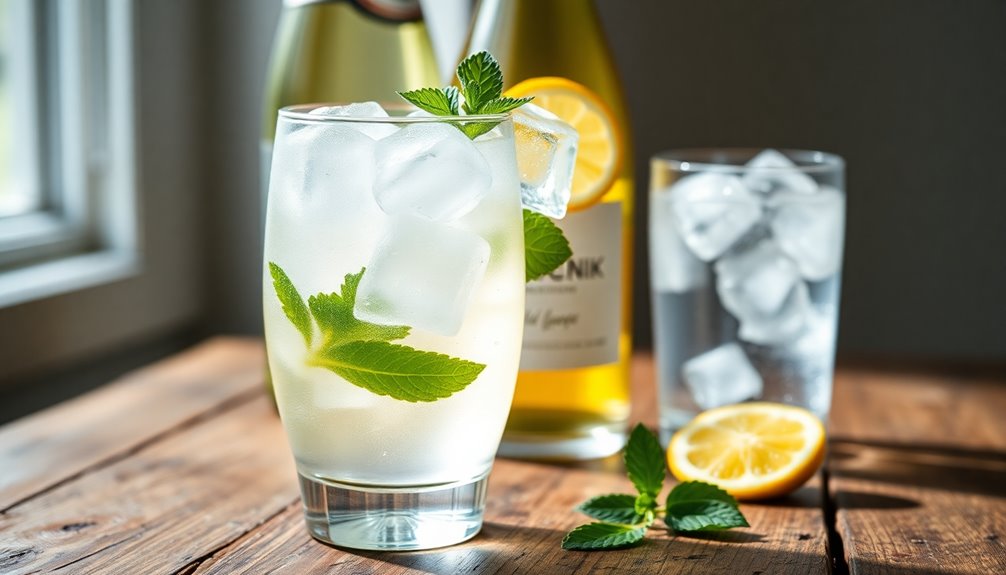
Ingredients:
- 1/2 ounce St-Germain elderflower liqueur
- 4 ounces chilled prosecco
- 1 ounce chilled soda water
- Fresh mint sprig (for garnish)
- Lemon wheel (for garnish)
- Ice
Instructions:
Begin by muddling the elderflower liqueur with a sprig of mint in a chilled white wine glass.
Allow the mixture to sit for about 3 minutes to let the flavors meld, then fill the glass with ice.
Pour in the chilled prosecco and soda water, stirring gently to combine the ingredients without losing the fizz.
Finally, garnish with a fresh mint sprig and a lemon wheel for an added touch of style.
Extra Tips:
For a twist on the classic Hugo Spritz, consider substituting ginger ale for the soda water for a spicier flavor profile.
You can also adjust the proportions of prosecco and soda water to suit your taste preferences—more prosecco for a stronger drink or more soda for a lighter version.
If you're looking for a non-alcoholic option, simply replace the elderflower liqueur with elderflower syrup and use a non-alcoholic prosecco for a similar taste experience.
Enjoy your Hugo Spritz chilled and savor the invigorating flavors!
Cooking Steps
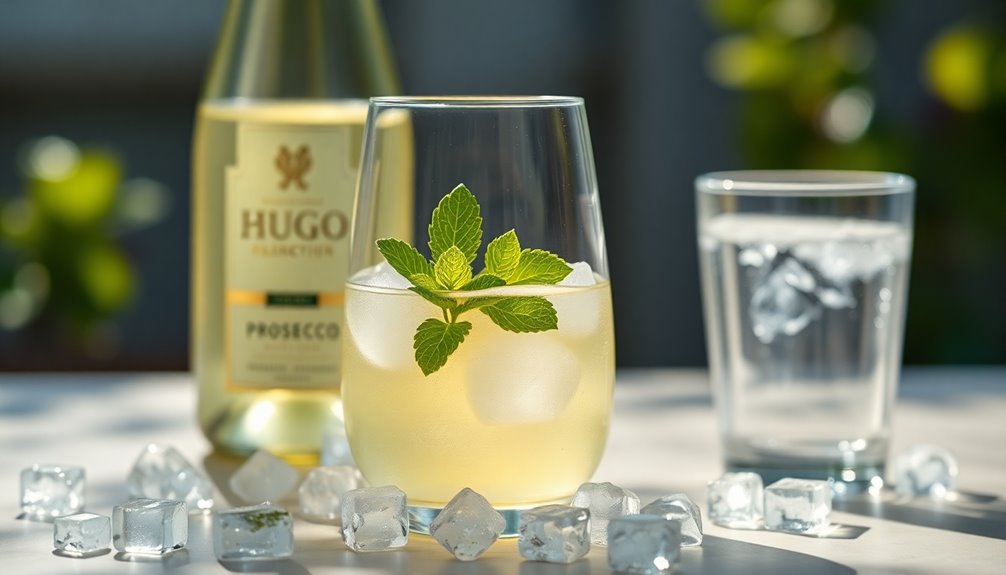
To create a revitalizing Hugo Spritz, you'll want to start by chilling your glass with ice.
Next, add the prosecco and St-Germain liqueur, followed by a generous splash of soda water.
Finally, don't forget to garnish your drink with fresh mint and a twist of lemon zest for that perfect finish.
Step 1. Chill Glass With Ice
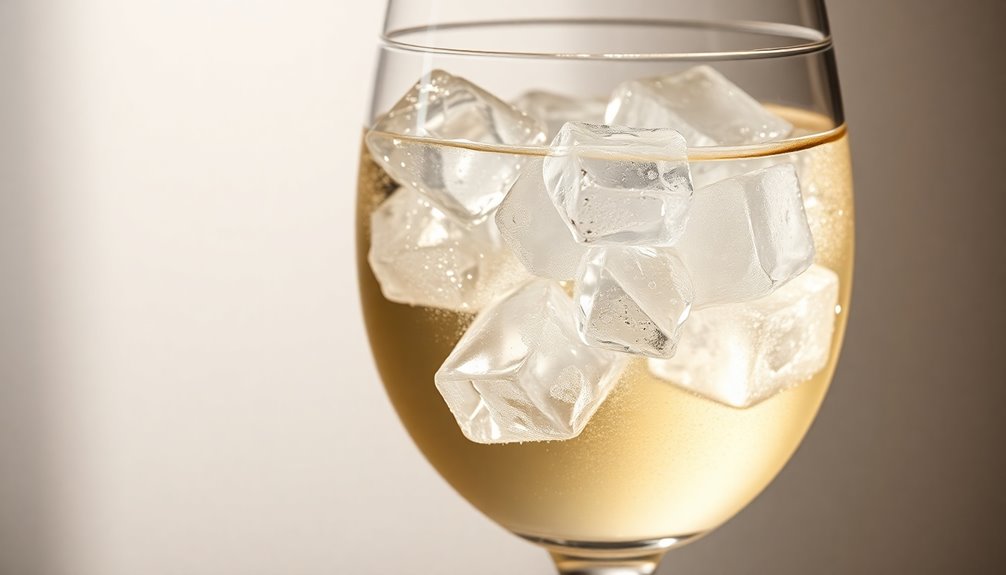
Chilling your glass is a simple yet essential step in crafting the perfect Hugo Spritz. To start, fill your wine glass or highball glass with ice and let it sit for a few minutes.
This guarantees the glass is cold, preserving the drink's effervescence and enhancing your overall experience. A chilled glass keeps your cocktail colder for longer, allowing the floral and citrus notes to shine through without the risk of dilution from warm glassware.
Once the glass is adequately chilled, discard the ice and any accumulated water. Now, you're ready to pour in your cocktail mixture, setting the stage for a revitalizing Hugo Spritz that showcases its delightful flavors.
Enjoy every sip!
Step 2. Add Prosecco and St-Germain
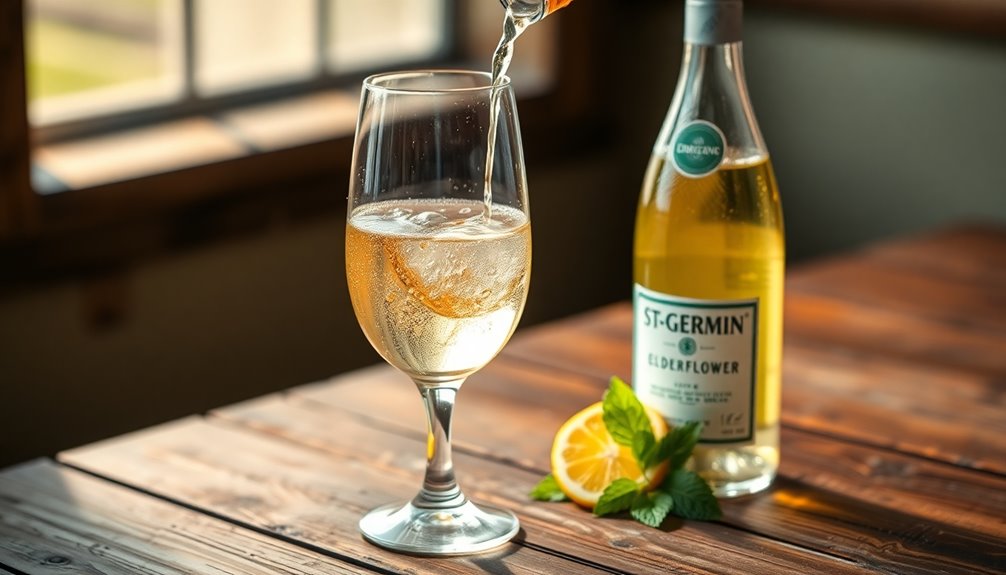
Once your glass is chilled and ready, pour in 4 ounces of chilled prosecco over the muddled mixture of 1/2 ounce St-Germain elderflower liqueur and fresh mint leaves.
This Hugo spritz recipe combines the sparkling wine's effervescence with the floral notes of the elderflower cordial, creating a revitalizing cocktail.
Make sure to use a dry (brut) prosecco to maintain a balanced flavor and prevent overwhelming sweetness in your drink.
After adding the prosecco, gently stir the mixture to combine the flavors without losing that delightful fizz.
This step is essential for the perfect Italian spritzes.
Enjoy this revitalizing cocktail recipe as you sip on the harmonious blend of mint and elderflower!
Step 3. Add Soda Water Generously
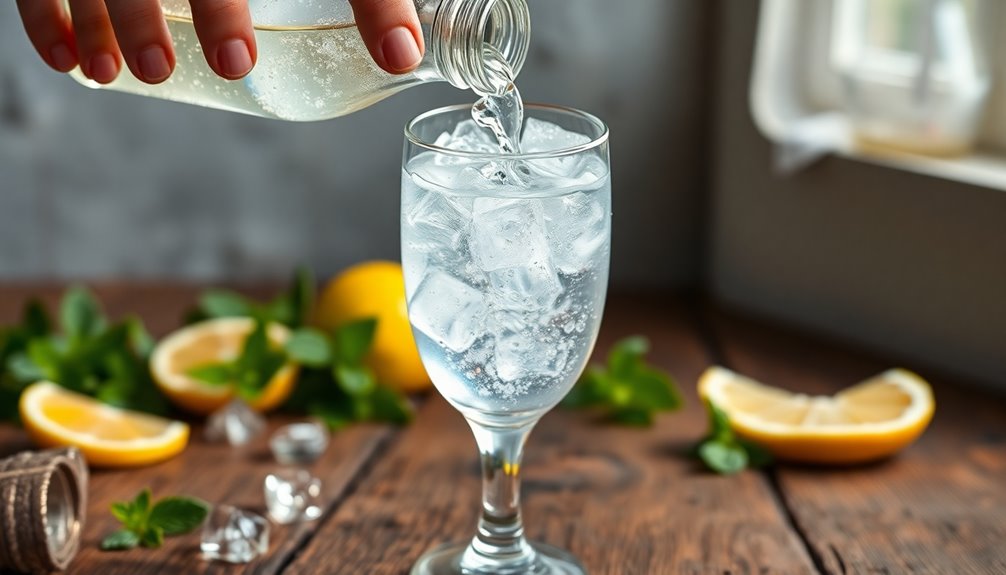
Adding soda water is an essential step in perfecting your Hugo Spritz. Start by pouring 1 ounce of chilled soda water into your cocktail. This addition enhances the effervescence and balances the floral flavors from the elderflower liqueur.
The chilled soda water is important for maintaining your drink's rejuvenating quality and preventing dilution. For a lighter drink, consider using a higher proportion of soda water, typically 1 part soda water to 4 parts prosecco.
After adding the soda water, stir gently to preserve those delightful bubbles. This light drink is perfect for warm weather and social gatherings, ensuring your Hugo Spritz is both invigorating and satisfying, making it a hit among friends.
Enjoy the revitalizing taste!
Step 4. Garnish With Fresh Mint
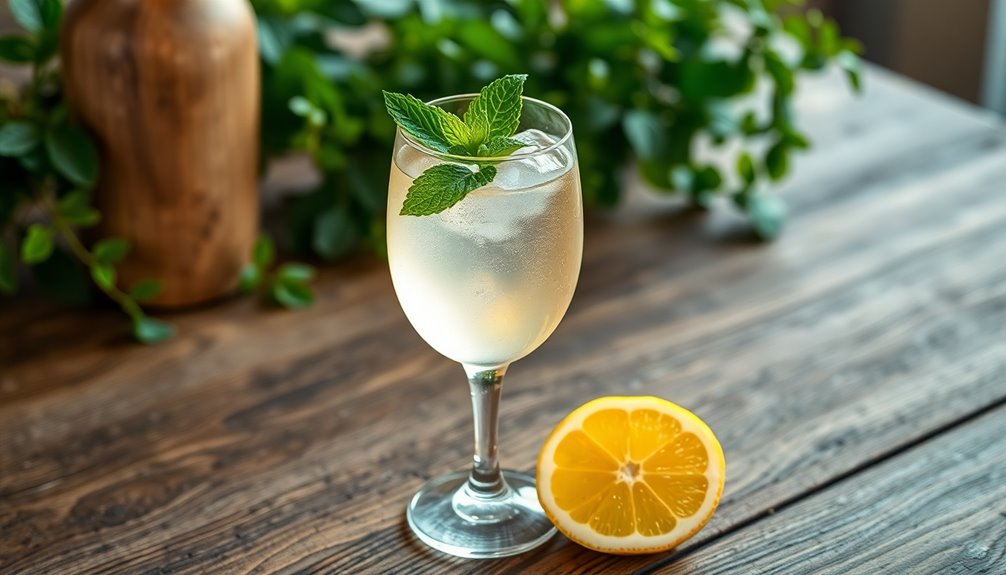
To elevate your Hugo Spritz, fresh mint is a must-have garnish. Start by gently slapping the mint leaves between your hands to release their aromatic oils, enhancing both the aroma and flavor of your cocktail.
Strip the lower leaves from the mint sprig, leaving a vibrant bouquet at the top for a visually appealing touch. If you want extra coolness, consider shocking the mint in an ice water bath to keep the leaves crisp.
When garnishing, place a mint sprig alongside a lemon wheel to add zesty aroma and color. Remember to avoid bruising the mint during muddling, as this can release bitterness instead of that invigorating minty flavor you desire.
Enjoy your beautifully crafted drink!
Step 5. Add Lemon Zest Twist
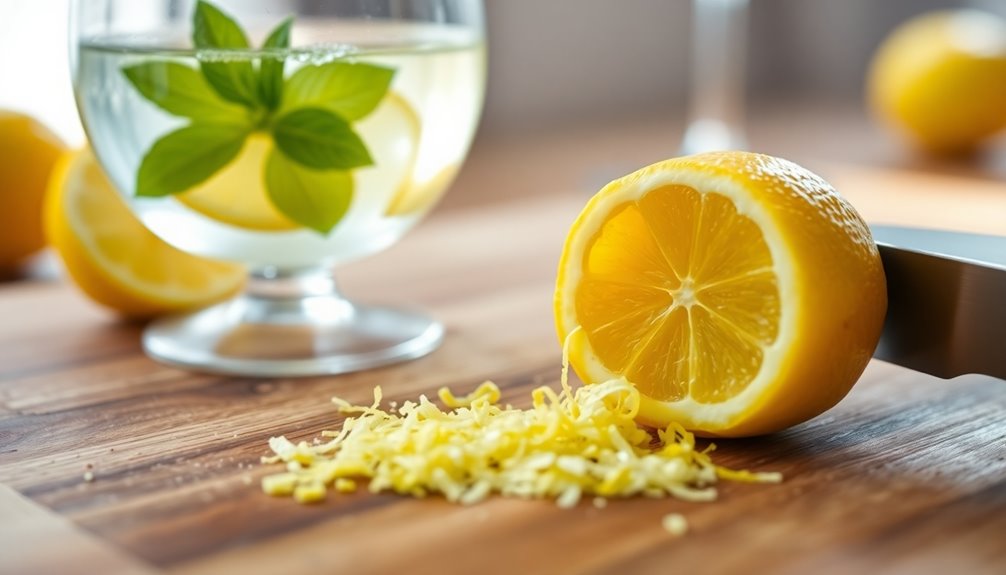
While crafting your Hugo Spritz, incorporating a lemon zest twist instantly elevates the cocktail's flavor profile.
Start by using a vegetable peeler or zester to create thin strips of lemon peel, steering clear of the bitter white pith. After muddling the elderflower liqueur and mint, add the lemon zest to the mixture, enhancing the citrus notes and aroma.
Mix in the zest with ice, prosecco, and soda water to infuse a vibrant flavor throughout the drink. For an elegant finish, twist the lemon zest strip over the cocktail before dropping it in as a garnish, releasing its essential oils.
This addition beautifully complements the floral notes of the elderflower liqueur, creating a well-rounded and invigorating taste in your Hugo Spritz.
Final Thoughts
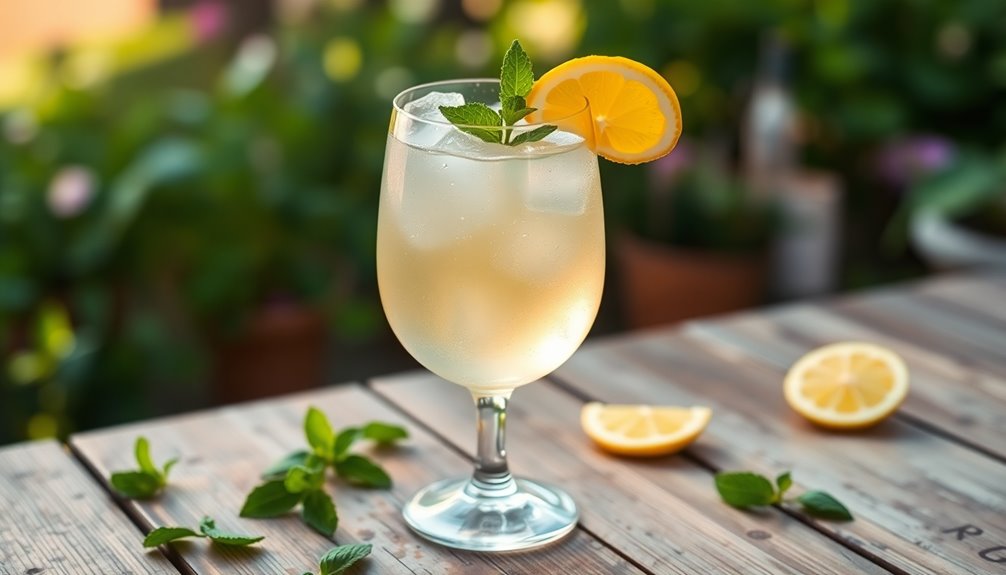
As you explore the world of cocktails, the Hugo Spritz stands out not just for its invigorating taste but also for its elegant presentation.
This delightful beverage combines elderflower liqueur, prosecco, and soda water, creating a revitalizing profile that emphasizes delicate floral notes and zesty citrus flavors.
Originating in Northern Italy, the Hugo Spritz reflects the region's aperitif culture and has gained popularity across Europe and the U.S. since its creation in 2005.
Garnished with a mint sprig and a lemon wheel, it not only looks appealing but also enhances the drink's aromatic qualities.
Whether you're enjoying light appetizers or simply unwinding, the Hugo Spritz is the perfect companion for a rejuvenating and sophisticated experience.
Frequently Asked Questions
What Does Hugo Spritz Contain?
A rejuvenating cocktail typically contains a mix of floral and bubbly elements.
You'll find elderflower liqueur for that signature floral flavor, along with chilled prosecco, which adds a sparkling base.
To enhance the effervescence, chilled soda water is included.
Fresh mint leaves contribute aroma and flavor, while a lemon wheel not only garnishes the drink but also adds a citrusy hint.
This combination makes for an invigorating and delightful beverage experience.
What Is the Difference Between Aperol and Hugo Spritz?
The main difference between an Aperol Spritz and a Hugo Spritz lies in their base ingredients and flavor profiles.
You'll find that the Aperol Spritz features Aperol, which gives it a bittersweet, citrusy taste. In contrast, the Hugo Spritz uses elderflower liqueur, providing a lighter, floral flavor.
Additionally, the Aperol Spritz often garnishes with an orange slice, while the Hugo Spritz includes fresh mint, enhancing its invigorating quality.
How Much St.Germain Is in Hugo Spritz?
In a classic cocktail recipe, you'll typically use about 1/2 ounce of St-Germain elderflower liqueur.
This amount strikes a perfect balance, allowing the floral notes to enhance the drink without overpowering it. If you prefer a drier profile, sticking to this measurement is key.
You can experiment with other elderflower liqueurs, but 1/2 ounce is generally recommended for the best flavor and aromatic qualities.
Enjoy crafting your drink!
What Type of Alcohol Is Spritz?
A spritz typically features sparkling wine as its base, often prosecco, which gives it a revitalizing effervescence.
You'll usually find flavored liqueurs like Aperol, Campari, or elderflower liqueur in the mix, adding unique flavors.
Sometimes, dry vermouth or fortified wines are also used for a different taste.
Topping it off with soda or tonic water not only enhances the drink but also lightens the alcohol content, making it perfect for sipping.


